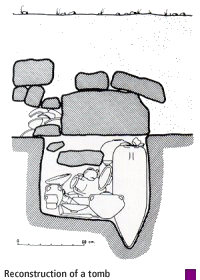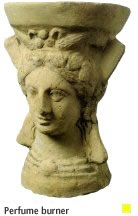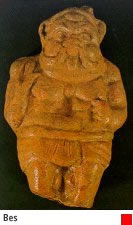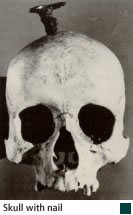
Death and the World of Belief in Iberian civilization

Excavated necropolises show that the Iberians cremated their dead and directly deposited the ashes in an urn or pottery vase in the earth. Only a few could be excavated scientifically as most part of them were destroyed by agricultural tools. Furthermore, we never have any association between the necropolis and its corresponding village.
This would be very useful for research because of the way they would complement each other.In many cases, cremations of men were accompanied by personal weapons like swords, helmets, cuirasses, lances or shields.
This ritual was inherited from the people who arrived at the end of the second millennium, the Indo-Europeans, who were one of the major contributors to the formation of the Iberian civilization.
We could say the same about the world of beliefs. Finds like the skulls in the Ullastret enclave demonstrate that these cultural contributions by people from the other side of the Pyrenees were much more important than we thought up until a few years ago.
Besides this, the seagoing Mediterranean people also added their ideas and beliefs, influencing the formation of an Iberian religion.
 The essence of Artemis, source of fertility, mother goddess and life-giver could have existed among the natives before the arrival of the Greeks, because of its presence in all the civilizations from the Neolithic era on. The popularity and rapid assimilation of this cult is shown by the numerous finds in those villages which were most specialized in the international trade of clay perfume burners in the shape of a bust of Demeter, goddess of the harvest and fertility generally.
The essence of Artemis, source of fertility, mother goddess and life-giver could have existed among the natives before the arrival of the Greeks, because of its presence in all the civilizations from the Neolithic era on. The popularity and rapid assimilation of this cult is shown by the numerous finds in those villages which were most specialized in the international trade of clay perfume burners in the shape of a bust of Demeter, goddess of the harvest and fertility generally.
It is possible that the stag’s antlers found in a silo next to the sacred area of Ullastret could signify that some of the temples of the acropolis in the village were dedicated to Artemis, a goddess who had the animal as her totem. This fact is unsurprising in a Indiget population as Hellenized as Ullastret was, being the centre of redistribution of Baix Empordà for all colonial products arriving in Empúries, the colony which introduced this cult of Artemis to the peninsula, according to the Greek geographer Strabo Turning to the Punics, small figures of the demigod Bes, protector of the home and matrimony, are solid proof of the universal character of these principles.
 So, like other aspects of their culture, Iberian religion and thought are also remarkable for their syncretic character.
As for the beliefs of the tribes in the Catalan territory, the Laietans of the villages in Penya del Moro, in Sant Just Desvern, Turó de Can Oliver, Cerdanyola or Calafell buried a young goat or sheep, sometimes only the skull and the legs, under the floor of some rooms. It is believed that these were foundational sacrifices for the building of a new residence. In these same villages some eggs were found in the roughcast of the walls of some houses, or more often in the necropolis, sometimes in large numbers. This was done because of the beginnings of life which they contain, a fact which has meant that eggs have been considered a symbol of fertility and eternal life up until the present day. This is why we continue to do it at the beginning of Spring – this is the meaning of our Easter Egg tradition.
So, like other aspects of their culture, Iberian religion and thought are also remarkable for their syncretic character.
As for the beliefs of the tribes in the Catalan territory, the Laietans of the villages in Penya del Moro, in Sant Just Desvern, Turó de Can Oliver, Cerdanyola or Calafell buried a young goat or sheep, sometimes only the skull and the legs, under the floor of some rooms. It is believed that these were foundational sacrifices for the building of a new residence. In these same villages some eggs were found in the roughcast of the walls of some houses, or more often in the necropolis, sometimes in large numbers. This was done because of the beginnings of life which they contain, a fact which has meant that eggs have been considered a symbol of fertility and eternal life up until the present day. This is why we continue to do it at the beginning of Spring – this is the meaning of our Easter Egg tradition.
 But the most interesting ritual produced in these villages is the infant burials, under the floor of the houses. Widespread throughout the Mediterranean country until recently, this custom came from the Middle East, and these infant burials might have been brought to the Catalan coast either by Phoenician merchants or by Greeks.
But the most interesting ritual produced in these villages is the infant burials, under the floor of the houses. Widespread throughout the Mediterranean country until recently, this custom came from the Middle East, and these infant burials might have been brought to the Catalan coast either by Phoenician merchants or by Greeks.
On the other hand, the cult of the skull is a tradition with continental clearly Celtic, origins, which is well documented among the Indigets of the Empordà. The decapitation and subsequent impaling with long iron nails of masculine skulls, possibly of enemies, in some cases associated with cultural buildings, must have been accompanied by some kind of ritual.